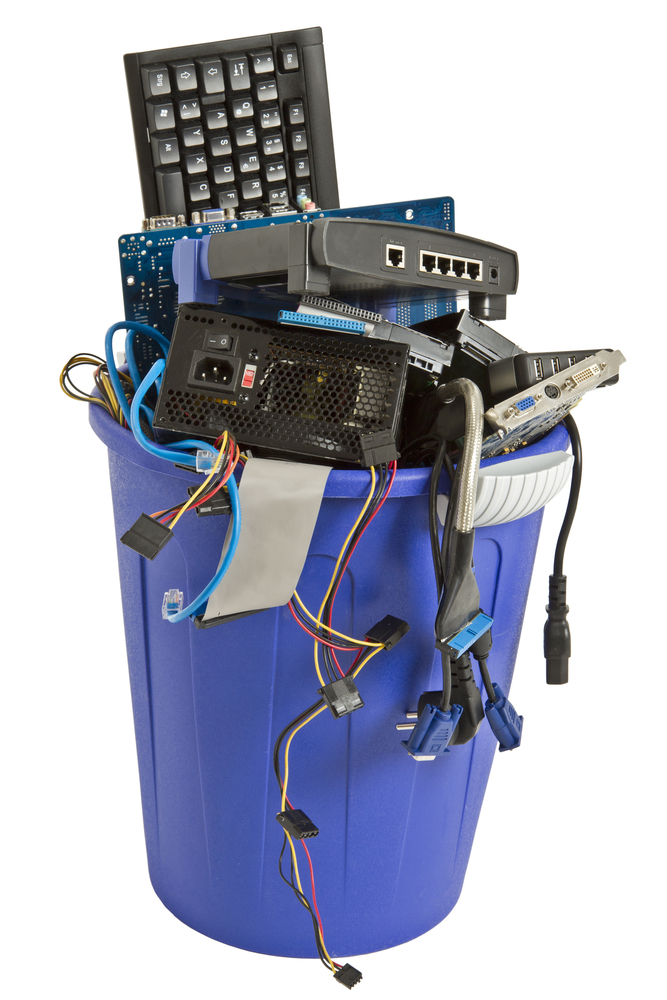 |
For years, responsible e-waste recycling was frustrating and difficult thanks to a lack of regulations, standards, or industry certification. In the past few years, however, the U.S. Environmental Protection Agency (EPA) and aligned organizations have created a framework of recommended standards as well as certification programs for e-waste recyclers, making it a lot easier for consumers to recycle right the first time.
The original guidance from the EPA was the Plug-In to eCycling Guidelines for Materials Management, which has now evolved into the Sustainable Materials Management Electronics Challenge program. This program, which is part of EPA’s “Rethink, Think Beyond Waste” initiative, creates a life-cycle loop for electronics recycling by teaming with equipment manufacturers and retailers to take back the products they produce or sell for recycling by certified companies.
Depending on the equipment, some of the Electronics Challenge participants offer a range of options, including drop-off locations, mail-back options, data wipes, asset valuation (for resale), and other services to ensure information contained on devices and equipment remains private, and equipment is managed responsibly.
Join us on November 21 for an in-depth webinar. Your expert presenter will show you how to focus on recycling in the context of a life-cycle analysis as applied to key materials.
Register Now
If an e-waste is not accepted by any of the Electronics Challenge partners, it is now easy to locate a certified recycler and feel confident it will manage the material according to best practices. At present, there are two certifying organizations, e-Stewards® and R2 Solutions, that meet EPA’s Plug-In to eCycling Guidelines. Both of these organizations’ certification programs operate through independent, third-party certification bodies that are accredited by the ANSI-ASQ National Accreditation Board (ANAB). Both also have their own set of standards, policies, and goals for themselves and the e-waste recyclers they certify.
For the sake of comparison, the primary differences between the two organizations are on the international level, specifically standards and policies pursuant to the Basel Convention on the Control of Transboundary Movements of Hazardous Wastes and their Disposal (Basel Convention), whose overarching objective is to protect human health and the environment against the adverse effects of hazardous wastes, especially in parts of the developing world. The Basel Convention has been adopted by 180 countries, and the United States is the only developed country that has not ratified and implemented it. In essence, e-Stewards follows certification standards fully based on the Basel Convention provisions fully incorporates the Basel Convention and R2 Solutions does not. R2 Solutions has its own certification standard, the recently revised R2 Standard (R2:2013 Standard).
Learn the typical materials that are candidates for recycling, and much more during our in-depth webinar on November 21.
Register Now
However, the differences may not matter in the long run as more and more take-back companies and others with large amounts of recycling business are requiring that their recyclers be certified by both organizations, minimizing wiggle room for potential environmental misdeeds at home or abroad. Meanwhile, unfortunately, the problem of third-world electronic waste dumping continues and similar activities are occurring right here in the United States as well.
For example, in September of this year, three abandoned warehouses in Arizona were discovered to be filled with an estimated 9 million pounds of toxic television and computer cathode-ray tube (CRT) glass that was traced back to California recyclers. These recyclers, under the state’s recycling program, entrusted the waste to the disreputable Arizona recycling firm that had disappeared, leaving all the toxic glass behind. Because the state’s program is subsidized by “Advanced Recovery Fees” paid by consumers at the time of purchase, ultimately California residents were the victims. The five companies that sent their waste to the fraudulent recycler are now required to resend the waste to a legitimate recycler.
As always, check with your state environmental agency to determine what, if any, laws and/or programs are in place for e-waste recycling. Also keep in mind that while many hazardous waste exemptions for e-waste components do exist at the state and federal levels, businesses that do not send their e-wastes for reuse or recycling but rather dispose of them in other ways may be deemed hazardous waste generators and subject to enforcement actions.
